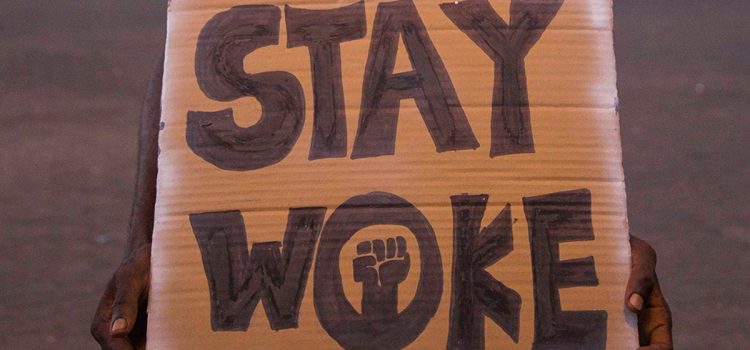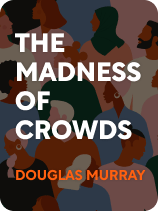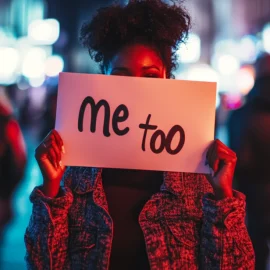

This article is an excerpt from the Shortform book guide to "The Madness of Crowds" by Douglas Murray. Shortform has the world's best summaries and analyses of books you should be reading.
Like this article? Sign up for a free trial here.
How did wokeism become a major ideology in the West? Does it fill a particular vacuum? How has social media made a difference?
In The Madness of Crowds, Douglas Murray explains how woke ideology has gained a foothold in mainstream Western society. He identifies four major societal shifts that he believes influenced these ideological changes.
Read more to learn about the origins of woke ideology.
The Origins of Woke Ideology
Murray points to several major shifts in society to explain the origins of woke ideology. He discusses the declining influence of orthodox religion, the rise of secular ideas, and the diffusion of interests that gave rise to smaller identity groups. He also looks at the influence of academic ideas and how certain economic and technological shifts contributed to woke ideology’s growth.
#1: The Demise of Traditional Religion and Liberalism
First, Murray argues the New Ideology partly developed due to the decline of several major belief systems that previously stabilized Western society: most notably, traditional religion and traditional liberalism. These two belief systems offered society stability because they gave life meaning through big-picture explanations of how the world works. Traditional religion argued that divine planning shaped events. Liberalism argued that human reason (our ability to seek and reveal truth through the use of intellect, logic, and observation), and our corresponding ability to improve the world, was the most impactful force.
In the 19th century, traditional religion and major political ideologies like liberalism increasingly lost their credibility. According to Murray, the resulting vacuum was then filled by postmodernism. This intellectual and artistic movement argued that universal truths and movements that forward them are untrustworthy, and that the human condition is instead prone to ever-more fragmented varieties of experience.
Ultimately, Murray concludes, these ideological shifts drove people to find new forms of meaning. Many did so by identifying with smaller and smaller groups based on immutable characteristics like race, gender, and sexual orientation. Eventually, the act of fighting to protect these groups from perceived victimization appeared to offer a new, higher morality to replace those that religion and liberalism previously provided.
#2: The Influence of Marxism
Murray also believes that leftist academia, particularly Marxism, influenced the rise of the New Ideology. Marxism, developed by Karl Marx, argues that economics, particularly the control of resources, is the major driving force behind how human society functions (and has always functioned). This drives the development of a social structure in which one class dominates most of the resources and uses the labor of the less powerful classes to cement its power.
Marx thought that capitalism—wealthy industrialists owning most businesses and exploiting the labor of manual, hourly workers (also called the Proletariat or working class)—would be the final stage of this abusive pattern of history. Eventually, the oppressed working class would rise up against the dominant one, ending abuse, inequality, poverty, and corruption.
While traditional Marxism believes in the need to free working-class laborers from economic oppression, Murray thinks the New Ideology promotes a slightly different brand of cultural Marxism—one that prioritizes the freeing of minorities from social oppression instead. Further, rather than evenly redistributing economic resources across all walks of life as traditional Marxism desires, the New Ideology wants to redistribute social and political influence. It provides activists with the tools to achieve this through the three pillars of intersectionality, identity politics, and wokeness.
#3: The Impact of the Great Recession
Murray notes that the Great Recession of the late 2000s also contributed to the rise of the New Ideology. This economic crisis ruined the faith many younger adults held in capitalism by dashing hopes that they could ever achieve the financial independence of their parents. Murray believes that this experience prompted many young adults to feel drawn to the New Ideology, which is overwhelmingly concerned with correcting every perceived form of inequity.
(Shortform note: The financial downturn that occurred from late 2007 to 2009 was an economic crisis that impacted nations across the globe. Its specific effects arguably underscore why people may have been driven to more extreme ideologies that promised equality. For example, Americans collectively lost almost $20 trillion in net worth and almost nine million jobs during the crisis. In the UK, the effects on young people were particularly pronounced, with mass layoffs and struggles finding new work.)
#4: The Impact of Social Media
Murray also contends that social media has made it easier for the New Ideology to flourish. This is because people use online spaces to constantly express feeling offended by perceived slights to their beliefs and identities.
Murray elaborates that social media encourages people to hyper-focus on themselves and their experiences. When they feel aggrieved by an offense, they can instantly vent that frustration on social media, or even call out the person they think is guilty of that offense. Like-minded people can then react immediately and virally, creating a toxic environment. Further, these like-minded users rarely examine the original circumstances of the incident to either prove or disprove the accusation. This can then lead to cancel culture.
Finally, Murray notes that social media has become a means through which politicians, academics, media personalities, and others aligned with the New Ideology can police speech and ideas not aligned with it. They censor and condemn those who express these ideas.

———End of Preview———
Like what you just read? Read the rest of the world's best book summary and analysis of Douglas Murray's "The Madness of Crowds" at Shortform.
Here's what you'll find in our full The Madness of Crowds summary:
- That Western society is consumed by social justice and identity politics
- Why we must combat this ideology and restore opportunities for disagreement
- How conservative viewpoints are being silenced and possible remedies







This is such a superficial assessment that it cannot possibly begin to summarize with any useful level of accuracy.
Two very important books I’d recommend are by Steven Pinker,
1. The Better Angels of Our Nature: Why Violence has Declined
and,
2. Enlightenment Now.